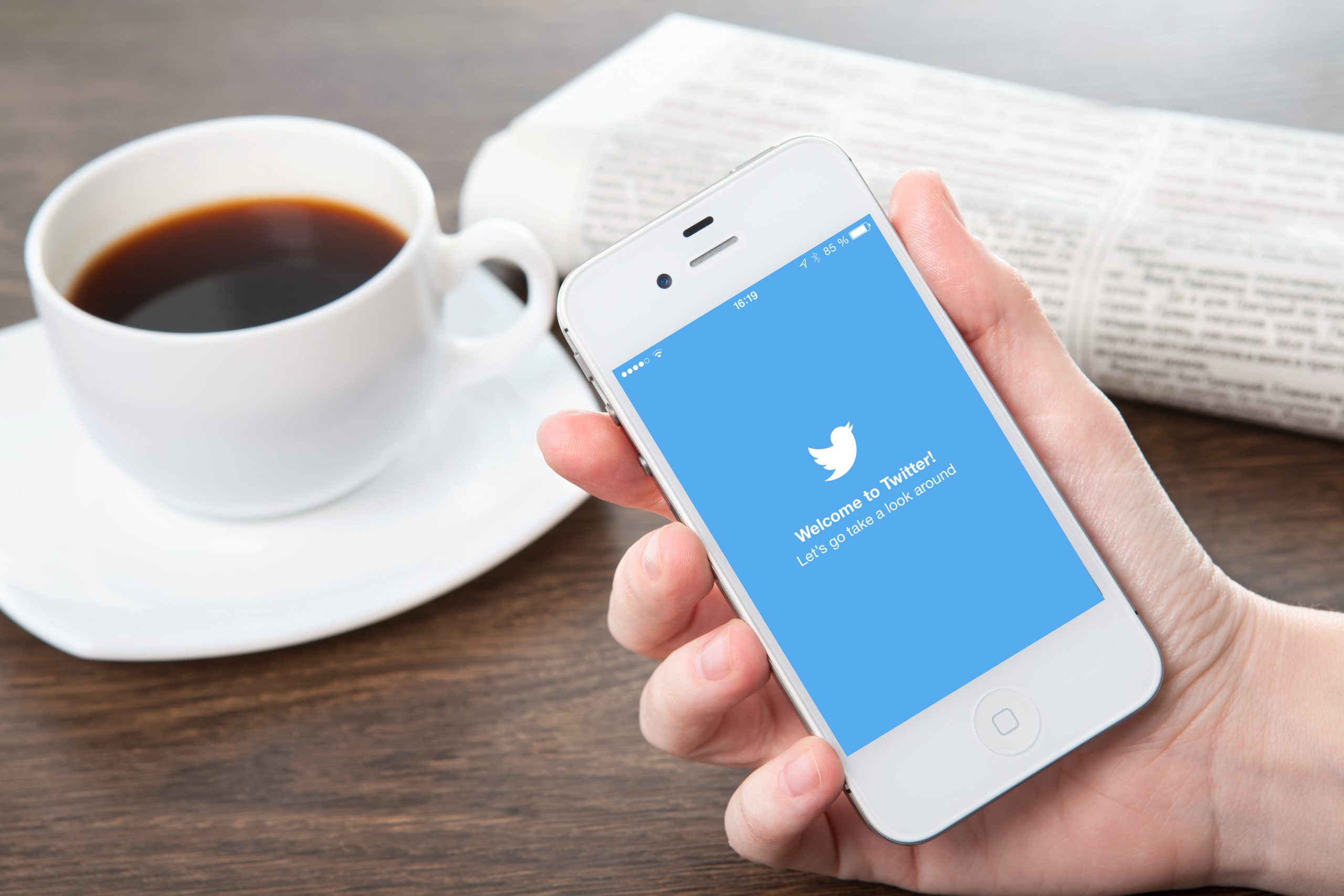Not all social media channels are created equal. This is particularly true for authors looking to grow an audience for their message.
You see, social media channels exist on a spectrum.
On one side of the spectrum sit relationship-sustaining channels, like Facebook, where we spend our time staying connected with people, celebrities and brands that we already know we like. We’re not on Facebook to take chances on bands or authors we’ve never heard of – that’s just not the etiquette of the site.
On the other end of the spectrum are relationship-building channels, like Twitter, where we spend our time both listening and having conversations about topics, TV shows, sports teams and, yes, even books – more often than not with people we don’t yet know who have a shared interest in the topics we’re discussing.
If Facebook is the family reunion, Twitter is the cocktail party.
As an author looking to grow an audience, Facebook is not the best place for you to spend your time. I can’t tell you how many authors I see start a Facebook fan page, ask their friends and family to like it, and then spend the next year burning them out with book-focused content before giving up on the page with 131 fans. As an author on the way up, Facebook can often be a slow and painful grind -particularly for your friends and family.
Once you build a following to the level that people know to look for you, Facebook becomes a great place to be, but until then, Twitter is by far your best engine for new relationships. This is particularly true for nonfiction authors looking to build relationships with high value targets, including journalists/bloggers, thought leaders, potential customers and influencers.
How can you get the most out of Twitter? Here are five ways to do so:
The magic of Twitter is in the focus
Getting started on Twitter is like walking in the door of the world’s largest cocktail party. Imagine doing so, and looking out at all the people circled up (as we do at cocktail parties) having conversations about an almost infinite amount of topics.
The mistake I see most authors make as they get started on Twitter is the lack of focus in their tweets. Most just walk through the door and start tweeting, with no thought to targeting their tweet at someone (an @ reply) or getting involved in a hashtag. This is kind of like walking in the door at a cocktail party and just beginning to talk aimlessly, with no one around to listen to what you’re saying.
Most authors who do this tweet for 2-3 weeks and throw their hands up in frustration, telling anyone who will listen at their next writers conference that “no one engages on Twitter.” Sure, that might be the case for that author, but it’s only because they have been talking to the wall the entire time they were at the cocktail party.
Although I eventually want you to focus your Twitter content on engaging with readers, fans and admirers, as you get started on the site you must keep in mind that no one is yet circled up around you waiting for your next tweet. Hopefully that will come, but until then you must proactively find the right circles in which to join the conversation.
The best way to do that is to use the “lists” function within Twitter to follow and organize three target groups I suggest you hone in on for new relationships:
- Media members – I want you to follow the top 100-150 journalists, bloggers, podcasters, etc. in your topic area and group them into a list
- Authors/thought leaders/influencers – I want you to follow the top 25-75 “taste-makers” in your topic area and group them into a list
- Groups/organizations/potential clients – I want you to consider which groups represent the best collection of your target audience and group them into a list
Many people talk about the noise of Twitter and when it comes to the general Twitter timeline, I absolutely agree. However Twitter has something that voice calls, emails and many other forms of “traditional” communication don’t – our attention.
I don’t mean that people are watching every tweet that comes from your account, but when you @ mention someone, odds are, they are getting a push notification straight to their smart phone – the kind of attention few forms of communication (outside of texting) provide.
What should you do once you have organized your target “circles”? See #2.
Listen…and then engage
Now that we have our target circles organized, it’s time to walk up and join the conversation. Spend time each day reviewing tweets from each list and, for the first two weeks, only listen to get a feel for how these influencers approach Twitter and what topics they discuss most. This will allow you to get a feel for etiquette on the platform and prevent costly mistakes.
After two weeks, begin a strategy of looking for at least one tweet a day to respond to in each of your three lists. These responses can take on a wide range of forms, including retweets, @ replies, @ mentions or favorites. The secret to Twitter is to ensure 95% of your tweets include at least one @ mention or hashtag, which gives that tweet the best opportunity to make an impact.
To carry through the cocktail party theme, make sure your content reflects the kind of conversation you would have with someone in person. You would never lead into a conversation at a party with the news that you have a new book out or are available for an interview because that would immediately sour the mood and make you look like a jerk. Rather, you’d ask that person about the article they wrote that day, agree with their perspective on something they said (often adding something witty or interesting to support it) or even politely disagree while offering constructive commentary.
Take the same approach on Twitter. Remember – if you wouldn’t say it in person in a real-world networking environment, don’t say it on Twitter.
Provide real-life context to your Twitter content
Many of the most engaging tweets I have created through the years began with something that happened offline. Here are a few ways to bring a bit more context to your Twitter content:
- Extend real-life interactions online. Thank someone on Twitter after a great lunch. Praise a speaker for delivering a powerful message in their keynote. A positive tweet gives someone public “props” and even the most successful thought leaders appreciate it. So do your friends and others you want to strengthen relationships with.
- Look for ideas in other forms of media. If a local author in your topic area is reviewed in a magazine or newspaper you’re reading, take the time to congratulate them with a tweet. If you see someone’s book on the front desk at Barnes & Noble, snap a picture and send a tweet letting them know you saw it. A consistent stream of such tweets not only builds relationships – it builds goodwill that can turn into reciprocation in the future.
- Add a heavy mix of photos. Twitter has been closely watching Instagram’s image-driven success and has made recent changes to make their timeline much more visual. Similar to both Instagram and Facebook’s image-driven timelines, Twitter now heavily showcases images. Our eyes are drawn to these visuals much more than tweets containing just text. As such, when you snap a picture of a funny headline, a gorgeous sunset or something else notable, that tweet is likely to get much more attention than a normal tweet.
Hashtags are your friend
One of my favorite features of Twitter are hashtags, which give us the ability to tag a tweet to join a larger conversation in a certain topic area. Hashtags are best used surrounding a shared experience like a conference. Most writers’ conferences establish hashtags, which allow attendees to tag their tweets to show up in the search stream for that event. The event’s hashtag not only creates an interesting and often lively backchannel conversation, but it also helps attendees connect with each other and share ideas surrounding that event.
Hashtags are also being used in a number of different ways on Twitter that go far beyond events. TV shows are stamping hashtags on the screen during shows to allow fans to have a backchannel conversation about that episode. Media outlets and others are organizing live chats on hashtags, including ABC News Health’s popular “Ask Dr. B” health chat, which focuses on a different medical topic each week. Charities are creating hashtags to foster shared conversations surrounding fundraisers and branding campaigns like the Ice Bucket Challenge.
Whatever your topic area may be, I guarantee there are hashtags where a conversation is taking place and it’s time to jump in and be a part of that dialogue.
Harness the power of big data
One of my favorite things about Twitter is how freely it provides access to real-time data surrounding its content. The search field on Twitter is one of the most under-utilized components of the site and, for authors like yourself, it can make all the difference in the world as you work to grow your audience.
Before I go stay in a new hotel, I always search it on Twitter looking for recent comments and images from guests. Before I go see a new movie, I’ll search it on Twitter for real-time reviews. And, yes, like many people, before I buy a book I’ll search it on Twitter for commentary from readers.
As an author looking to build an audience, you can use this Twitter search stream to hone in on the right “circles” in the room for your book. I always recommend that authors find the ten bestselling books in their category and do a Twitter search on the book titles to pull up a live stream of bloggers, influencers and others who are talking about the book. Those who are interested in the top books in your category may well be interested in your book and are definitely worth following. If you are prepping for your book launch, such searches can help you to build a list of target media outlets to reach out to surrounding your book launch.
If used correctly, the Twitter search stream can provide valuable insights that allow you to work much more efficiently – and effectively – as you launch your book.
Other than your blog, there is no better relationship-building social media channel available to you as a new author than Twitter. For more information about how to get the most out of Twitter, click here to download my FREE Twitter Playbook, which helps busy authors make an outsized impact on my favorite social media channel.




